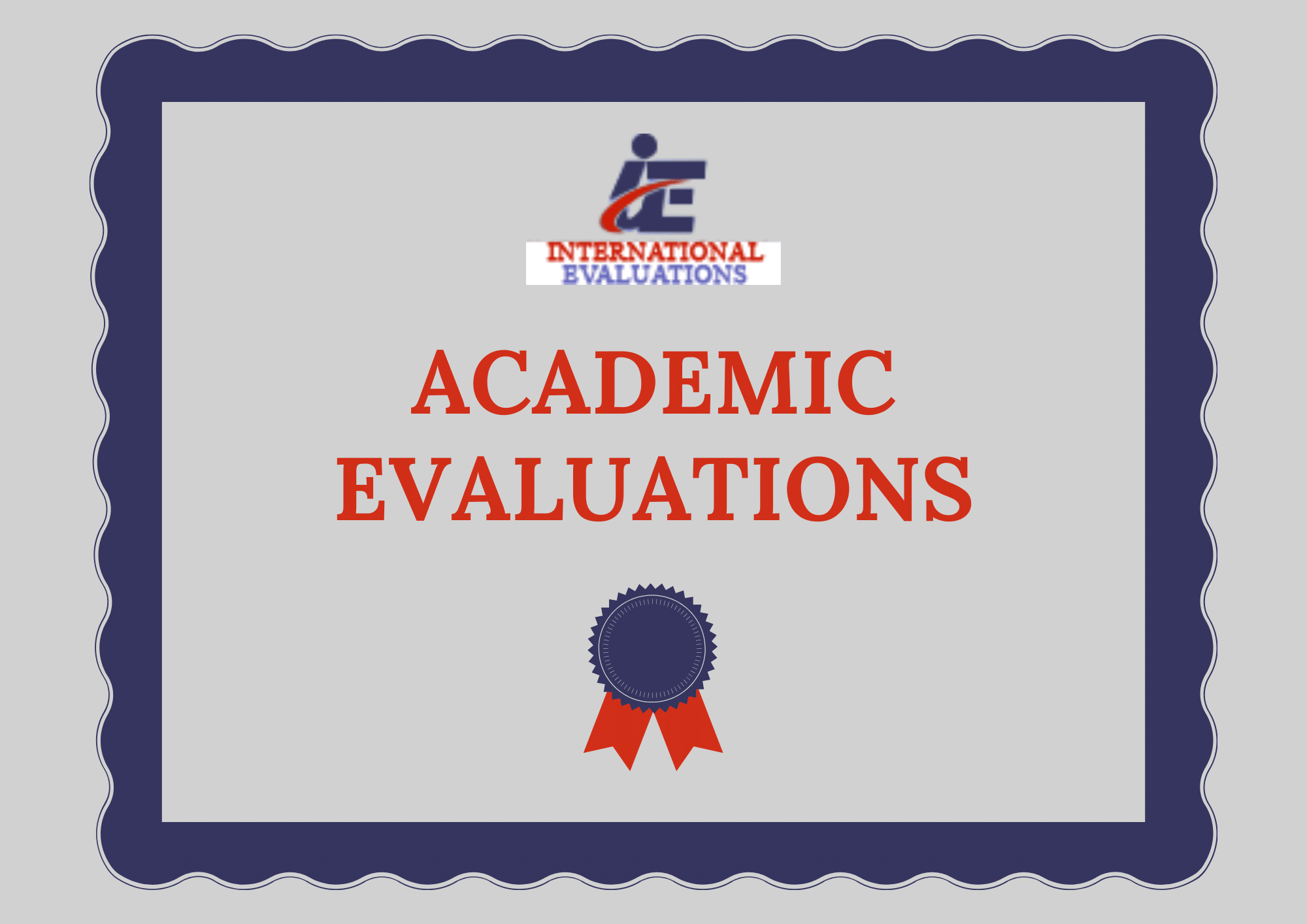Introduction
In today's globalized globe, higher education credentials are increasingly valued throughout nationwide borders. Numerous individuals seek to advance their occupations or pursue educational chances in various nations, demanding a detailed understanding of their academic certifications. This is where international credential analysis services entered play, assisting both individuals and institutions in confirming the credibility and equivalency of international academic credentials.
Among the different techniques of credential assessment, the course-by-course credential evaluation sticks out as a thorough method that gives an extensive analysis of a person's instructional transcripts. This short article will check out the subtleties of course-by-course examinations, detailing what they require, why they are important, and how they can impact one's profession trajectory.
What is Course‑by‑Course Credential Evaluation?
Definition and Purpose
A course-by-course credential evaluation involves a thorough assessment of each program detailed on a scholastic records. This analysis not just translates qualities and credit reports however also assesses the web content and roughness of each course taken by the student. The primary objective is to establish just how these programs straighten with instructional requirements in another country.
Importance of Course‑by‑Course Evaluations
Why is it important to perform a course-by-course evaluation? For people preparing to research or function abroad, this kind of evaluation can supply valuable understandings into just how their previous academic experiences convert in a brand-new context. It assists institutions in making informed choices about admissions, working with, or licensure.
The Process of Course‑by‑Course Credential Evaluation
Step 1: Document Collection
The very first step in any academic credential evaluation procedure is gathering necessary records. This normally consists of:
- Official transcripts Degree certificates Course syllabi (if available)
Having these papers prepared improves the assessment process.
Step 2: Testimonial and Analysis
Once records are gathered, critics carefully examine them for credibility and efficiency. Each program is examined based on numerous standards:
- Credit Hours: How many credit reports were appointed per course? Grades: What grades were achieved? Course Material: What subjects were covered?
Step 3: Contrast with Neighborhood Standards
After comprehensive evaluation, evaluators contrast the programs versus regional instructional criteria. They may reference sources such as:
- National databases Accreditation bodies Institutional guidelines
This contrast assists establish equivalency degrees for each course.
Step 4: Report Generation
Finally, critics compile their findings right into an extensive report that outlines:
Total credits earned. Equivalent programs at local institutions. Grading scales comparisons.This record works as an official document that can be provided to colleges or employers.

Benefits of Course‑by‑Course Credential Evaluations
Enhanced Understanding of Academic Background
One primary benefit is that pupils gain clarity on exactly how their worldwide education and learning lines up with https://lanegeei632.bearsfanteamshop.com/international-credential-examination-providers-helping-with-educational-journeys-abroad local assumptions. This understanding outfits them for much better decision-making concerning refresher courses or work applications.
Increased Employability
Many companies call for prospects to have actually evaluated qualifications when considering candidates from abroad. A favorable analysis can considerably boost employability prospects.
Facilitates Admission to Educational Programs
For trainees wishing to enroll in degree programs, having a comprehensive evaluation assists institutions examine whether candidates meet entry needs a lot more effectively.
Work Experience Examination vs. Course-by-Course Credential Evaluation
What is Work Experience Evaluation?
A work experience evaluation concentrates on analyzing specialist experiences as opposed to academic achievements. It takes a look at abilities acquired via employment instead of official education.
Key Distinctions Between Evaluations
|Attribute|Course-by-Course Credential Analysis|Work Experience Examination|| ---------------------------|---------------------------------------|----------------------------|| Emphasis|Academic courses|Specialist experience|| Paperwork Called for|Records and syllabi|Work letters|| End result|Academic similarity|Ability recognition|
Understanding these differences assists people in selecting which type of evaluation fits their needs best.
Expert Viewpoint Letters
Importance of Professional Opinion Letters
An expert viewpoint letter acts as an added layer of recognition for evaluations, particularly when unique situations arise-- like unaccredited organizations or non-traditional instructional experiences.
How They Are Used
These letters can support applications by offering understandings from specialists that analyze credentials based on market requirements or specific institutional requirements.
Common False impressions About Credential Evaluations
Myth 1: All Evaluations Are Created Equal
Not all assessments hold the very same weight; various companies have varying approaches and acceptance rates among institutions.
Myth 2: Just Degrees Matter
While levels are crucial, numerous employers value abilities obtained with job experience equally-- and this emphasizes the importance of work experience examinations alongside scholastic assessments.
FAQs Concerning Course‑by‑Course Credential Evaluation
What files do I require for a course-by-course credential evaluation?- You normally need official transcripts, level certificates, and possibly course syllabi if available.
- The period varies by company however generally ranges from a couple of weeks to several months relying on complexity.
- Yes! A lot of companies identify reviewed qualifications when making hiring decisions.
- Generally speaking, of course; due to its comprehensive nature and extensive analysis.
- Not all; it's critical to inspect specific institutional requirements prior to applying.
- It's finest to make clear any kind of disparities with your organization prior to entry; evaluators may flag incongruities affecting your assessment.
The Function of Various Stakeholders in Credential Evaluation
Educational Institutions
Institutions depend on accurate assessments to admit qualified prospects while guaranteeing compliance with accreditation standards.
Employers
Employers use examinations to confirm possible hires' certifications properly-- developing trust during employment processes.

Government Bodies
Some government firms require credential analyses for immigration functions; therefore playing a crucial role in international mobility.
Conclusion
In recap, navigating the complexities surrounding worldwide education needs thorough understanding and expertise-- both located within the realm of credential analyses especially focused on courses taken during one's scholastic trip. A course-by-course credential evaluation not only illuminates private success but likewise promotes possibilities across borders with boosted employability and instructional access.
As globalization proceeds shaping our world, spending time into understanding these subtleties can verify very useful for those looking toward international horizons-- whether academically or properly oriented! Constantly remember that you have alternatives available-- so make educated choices regarding your future!
